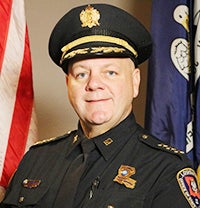Carbon monoxide is the invisible killer
Published 12:00 am Saturday, November 28, 2020
|
Getting your Trinity Audio player ready...
|
This year, Louisiana residents have heard a lot about the dangers of carbon monoxide as it relates to the use of portable generators during power outages. But did you know carbon monoxide, or CO, can also be a hazard when it comes to heating your homes?
Carbon monoxide, often referred to as “the invisible killer,” is an odorless, colorless gas created when fuels like gasoline, wood, coal, natural gas, propane, oil and methane are actively burning. In the home, heating and cooking equipment that burn fuel can be sources of carbon monoxide.
Some CO hazards are:
- Clogged exhaust pipes for dryers, furnaces, stoves, water heaters and fireplaces
- Running a vehicle inside of an enclosed garage, even if the garage door is open
- Operating a portable generator in an enclosed space or near a window, door or vent
When it comes to avoiding CO hazards associated with fuel-burning, heating appliances, have that equipment, including chimneys, inspected by a professional every year before cold weather sets in. And when using a fireplace, make sure the flue is open for adequate ventilation. Never use your oven to heat your home.
If you don’t already have a carbon monoxide monitor for your home, it is strongly advised to get one. Getting a combination carbon monoxide monitor and smoke alarm is even better. Once you have a CO alarm, follow these recommendations for best placement locations around your home:
- Have at least one alarm installed on every level of the home with fuel burning appliances
- Ideally, you’ll want an alarm located outside of each sleeping area
- Place alarms 5-20 feet from sources of CO like furnaces, water heaters and fireplaces.
- Make sure the alarm is free of obstructions and adverse environmental conditions that can occur near windows or doors
- Follow manufacturer’s instructions on additional placement and mounting height recommendations
If your alarm sounds, check the batteries to ensure they are in working condition. If the alarm still sounds, exit the home and call the fire department.
Here are some other safe-heating tips that the State Fire Marshal is offering to families:
- Place space heaters 3-5 feet from combustible objects like blankets
- Plug all heating appliances directly into wall outlets, not power strips or extension cords
- Don’t overfill fireplaces/wood burning stoves
- Do not leave candles/open flames (or space heaters) left unattended
- Have working smoke alarms in your home!
The SFM’s Operation Save-A-Life program partners with local fire departments and districts to provide FREE smoke alarm installations, at any time of the year, for families in need of assistance accessing the critical emergency-alert equipment.
In addition to having working smoke alarms, the SFM also emphasizes the importance of having planned and practiced escape routes for your home that include knowing two ways out of every room.
To register for a free smoke alarm, or learn more about Operation Save-A-Life, visit lasfm.org.





